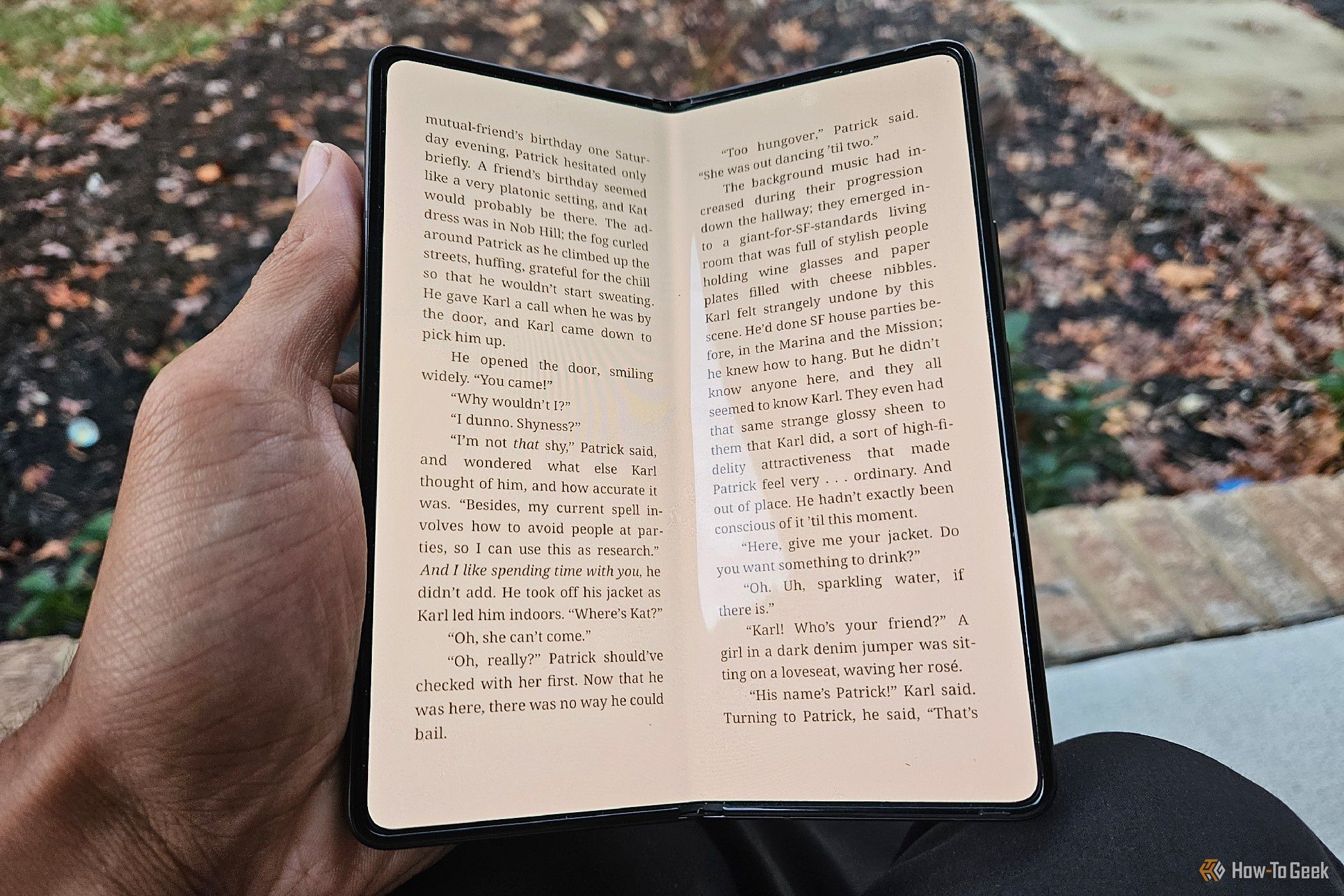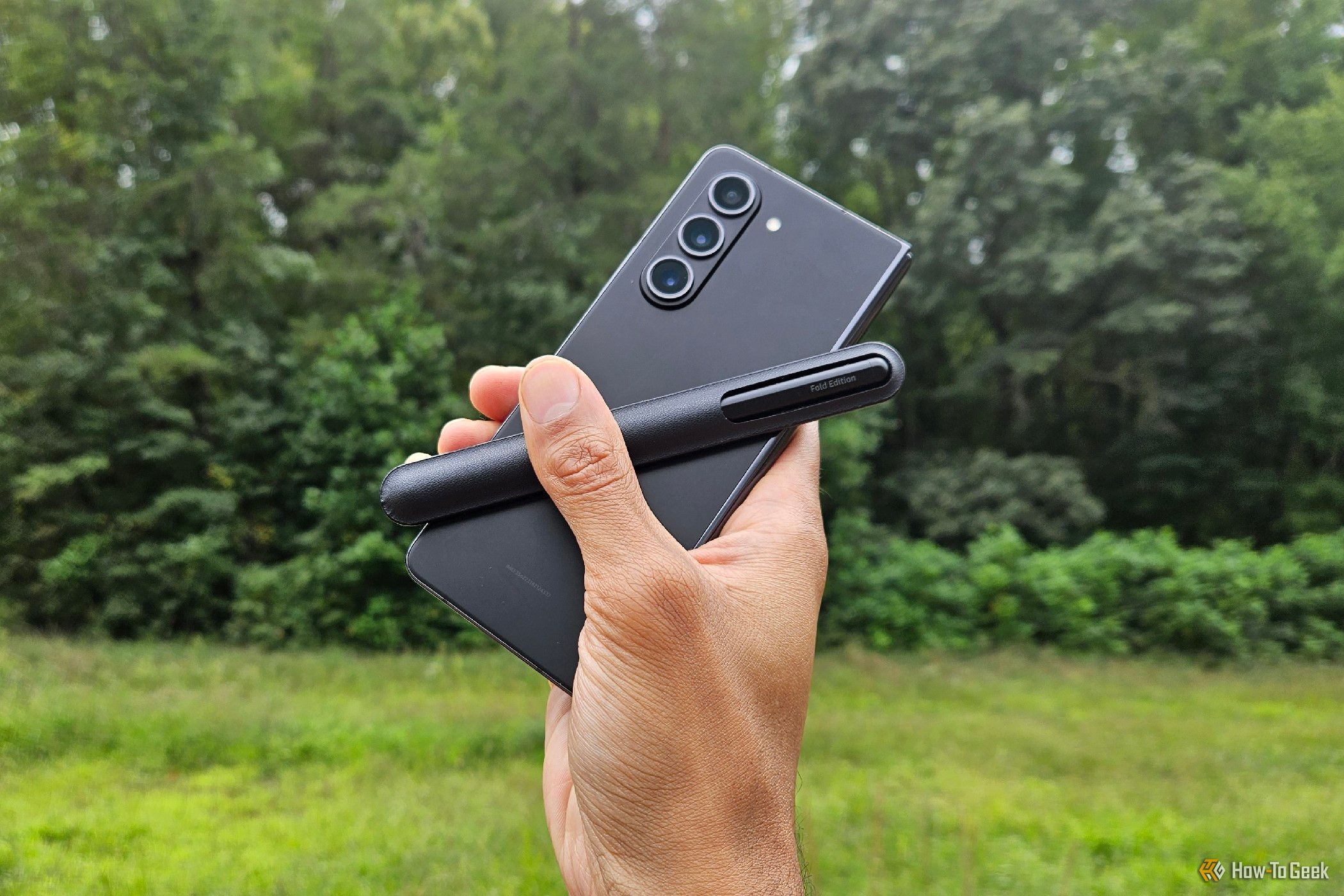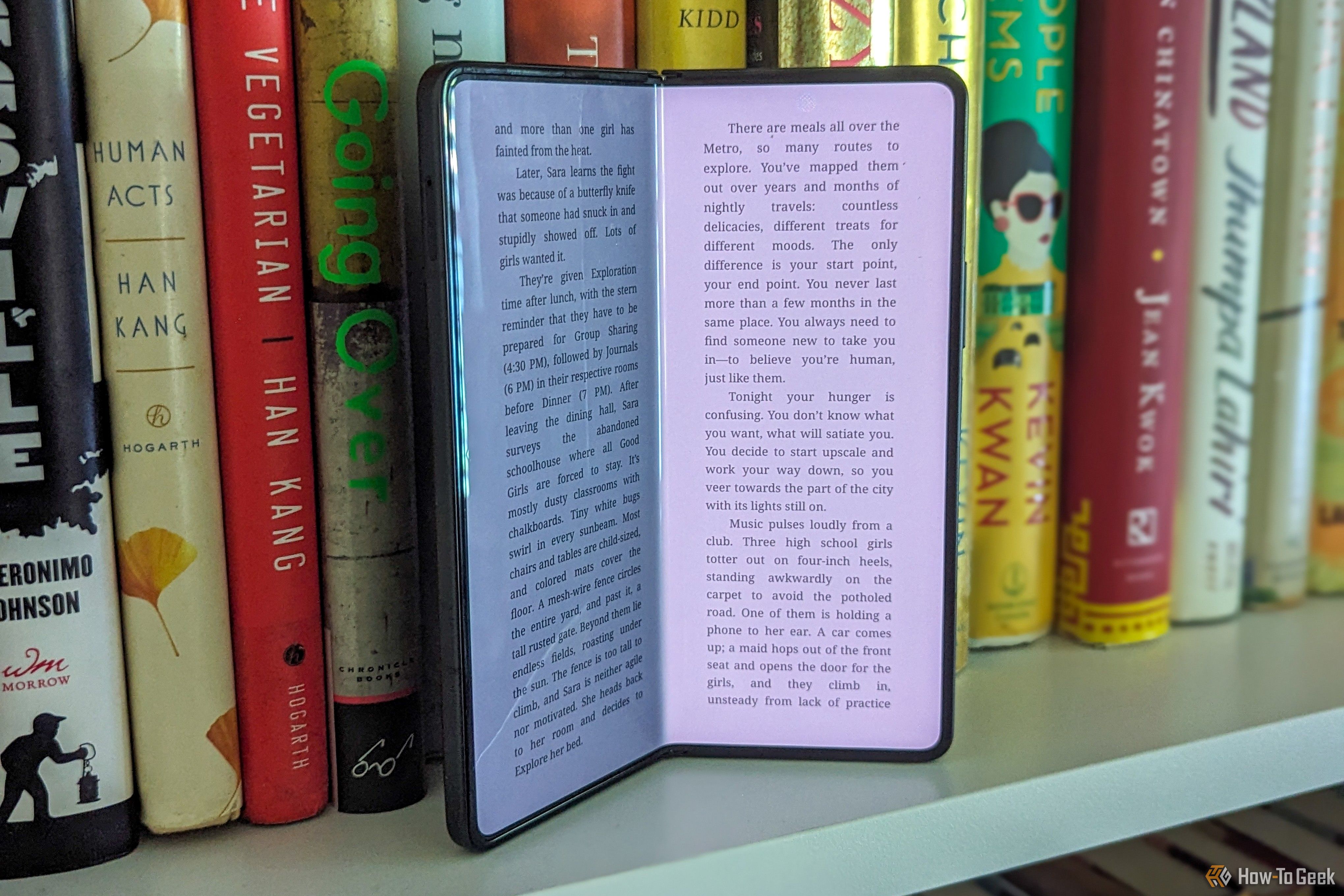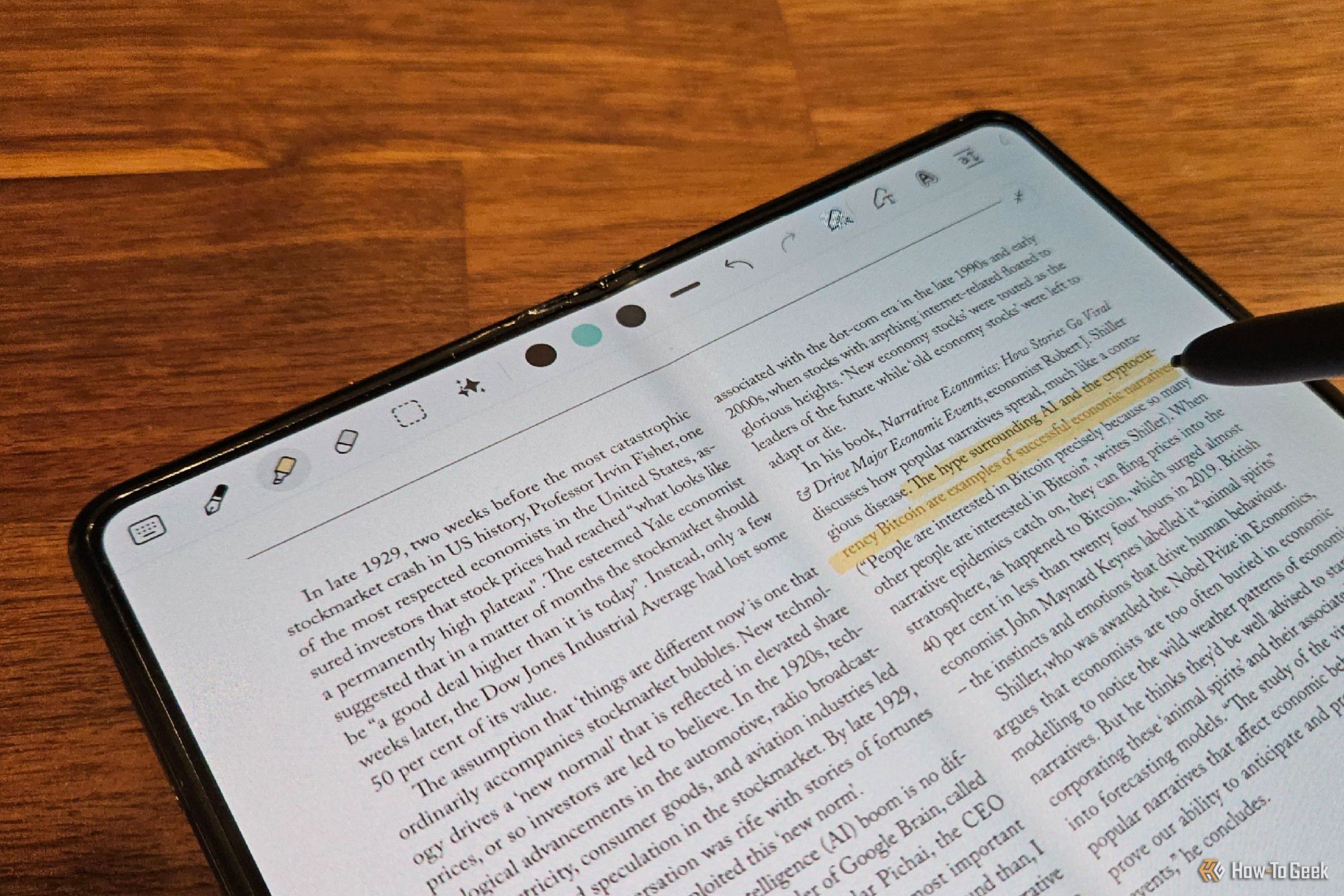When many of us think of ebooks, we think of an Amazon Kindle eReader. But these days, there’s another portable piece of tech that is literally shaped like a book—the book-style foldable phone. I carry one in my pocket, and I’m now reading more than ever.
A Book-Shaped Phone Feels Like Holding a Book
We often use tech to re-imagine how things can be. If we can carry around a lightweight digital slate, text can take any shape we want. On e-ink eReaders like either a Kindle or Kobo, we don’t turn pages. When we swipe, the text simply vanishes, instantly replaced by new words.
Yet there is something both familiar and comforting about the shape of a book. Holding a tome in two hands and turning a page signals to our brains that we aren’t reading a webpage or digesting an email. We are reading a book.
Engaging with a novel, a biography, or a collection of poems is different from inhaling a blog post or scrolling through a social media feed. Something is lost when we flatten all media to the point where they increasingly feel—physically—the same.
More Portable Than Any Kindle
I’ve owned a Nook Simple Touch and a Nook Color. I’ve had several Boox tablets, like the Boox Tab Ultra C. They were all doomed for the same reason: when I wanted to read a book, I didn’t have them on me.
In theory, carrying around an eReader isn’t that different from carrying around a physical book. They’re similar in size, after all. If anything, the portability of an eReader is one reason to read ebooks over physical books. But an eReader is an electronic gadget, somewhat delicate and too valuable to be as carefree with.
I don’t want to carry an expensive tablet in my hands as I move through the world, placing it down on tables or on the seat beside me because it doesn’t fit in my pocket. Even a cheap eReader costs more than most books, and price aside, there’s something risky about losing books or notes that I personally opt not to sync to the cloud. So I only feel comfortable carrying it in a bag, a bag I don’t want to grab every time I leave the house.
The internal screen of my Galaxy Z Fold 5 is similar in size to that of an eReader, yet it’s as portable as any other smartphone. It slips into my pocket when not in use, invisible to the world. This is a big part of why I now prefer reading ebooks on my phone over an eReader.
View Two Pages or Columns at Once
eReaders tend to only display a single column or page of text at a time. This is especially true on conventional phones, with their tall and narrow aspect ratios. When you open up a foldable, you have the option to view two pages at a time.
Some book-shaped phones are better for this than others. While I never owned one, the Microsoft Surface Duo looked ideal for the job. So does the original Pixel Fold. Yet even on my Z Fold 5, whose relatively tall and narrow shape makes each half look more like a column of newspaper text than a page in a novel, the experience is still a step up. This is helped by the Z Fold’s minimalist exterior feeling more like a book than other options, like the OnePlus Open with its giant camera bump.
Marking Up an eBook Feels Great (Without Damaging Your Book)
The Z Fold doesn’t just feel like a small paperback; it feels even more like carrying a Moleskin notebook. When I pull out my S Pen (which I use all the time), it actually feels like I’m writing something down.
This feeling transfers over to marking up a book. Highlighting text can actually feel like dragging a highlighter over text. Reading a book (saved as a PDF) in Samsung Notes allows me to both write in the margins and circle important passages.
Still, my favorite thing about this feature is true of any other eReader, which is the fact that I’m not marking up my book in the process. You can say that a phone being able to fold makes no difference whatsoever here, and you would be right. Yet, for me, there’s something about opening and closing a device like a journal that makes me more inclined to take note of the parts of texts that make my heart sing.
Multitasking Can Be Less Distracting
One of the great things about foldables is that they make multitasking easier. This applies to reading, too. If someone’s texting you while you’re in a book, you don’t have to put the device down to go check on the conversation. You can shift the ebook over to the side of the screen, open the chat on the other half, and keep reading while the typing indicator continues to bounce away.
Does this still have the potential to distract you from a book? Absolutely. You’re making it easier to talk while you read. On the flip side, you’re also making it easier to read while you talk.
Plus, there is something to be said for the ease of looking something up without losing your place. This is something I feel the urge to do when reading non-fiction books that reference or recommend other books.
Is doing all of this while you read a good practice? I don’t know. Perhaps it’s better to keep a notepad by your side to write down things to do later rather than doing them right this second. I’ve tried to develop such a habit in the past, and kudos to you if it sticks. Lately, I’ve decided to embrace the convenience of a device that makes it faster to do, rather than resist, all the tech tasks that beckon. Then I can quickly get back to the task at hand.
Is having a book-shaped phone a gimmick? I’m not a fan of that term, as it’s often used to dismiss anything new or niche that may not gain mass adoption.
I love that this kind of gadget exists, and I hope it continues to. While some may be more excited about tri-fold phones, I don’t think packing a larger screen inherently makes them better. There’s something to appreciate about a device being shaped like a book, especially if, like me, you’re someone who really enjoys books. And if you prefer comics and manga, a book-style foldable is perfect for those, too.








